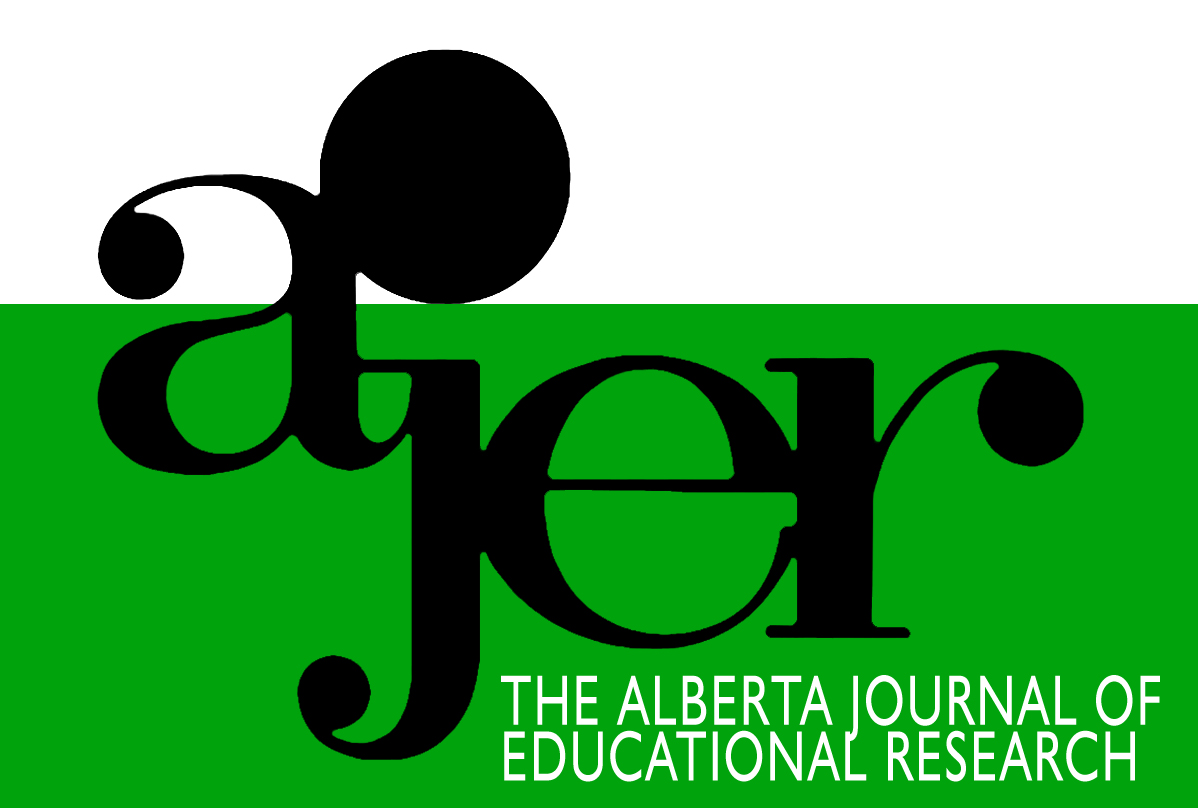Turning to Greet the Unheard, Unseen, and Unknown in Western Thought: Autoethnographic Stories of Learning with the Blackfoot
DOI:
https://doi.org/10.55016/ojs/ajer.v69i2.73086Abstract
The Truth and Reconciliation Commission of Canada has calls to action for the inclusion of Indigenous knowledges and teaching practices in classrooms. Western educators have different degrees of willingness, understanding, and skill in teaching Indigenous concepts and their teaching practices can be superficial. Highlighting autoethnographic accounts of learning from Blackfoot Elders through Indigenous land-based pedagogy with current literature review data, I argue that Western educators must understand that the more-than-human entities are animate and have agency in teaching and healing people. Findings suggest that all students benefit from the wise teaching practices of inviting the more-than-human as co-teachers.
Key words: Indigenous education, Indigenous land-based pedagogy, Blackfoot, more-than-human, autoethnography
La Commission de vérité et de réconciliation du Canada a lancé des appels à l'action pour l'intégration des connaissances et des pratiques d'enseignement autochtones dans les salles de classe. Les éducateurs occidentaux n'ont pas tous la même volonté, la même compréhension et les mêmes compétences pour enseigner les concepts autochtones, et leurs pratiques d'enseignement peuvent être superficielles. En mettant en évidence les récits autoethnographiques de l'apprentissage auprès des aînés pieds-noirs par le biais d'une pédagogie autochtone basée sur la terre, ainsi que les données d’une analyse documentaire actuelle, je soutiens que les éducateurs occidentaux doivent comprendre que les entités plus qu'humaines sont animées et ont un pouvoir d'action dans l'enseignement et dans la guérison des personnes. Les résultats suggèrent que tous les élèves bénéficient des pratiques d'enseignement sages qui consistent à inviter les entités plus qu'humaines en tant que co-enseignants.
Mots clés : éducation autochtone, pédagogie autochtone basée sur la terre, Pieds-Noirs, plus-que-humain, autoethnographie
Downloads
Downloads
Published
How to Cite
Issue
Section
License
UNIVERSITY OF ALBERTA COPYRIGHT LICENSE AND PUBLICATION AGREEMENT
If accepted, authors will be asked to sign a copyright agreement with the following points:
A. Where there is any inconsistency between this Copyright License and Publication Agreement and any other document or agreement in relation to the same subject matter, the terms of this Agreement shall govern.
B. This document sets out the rights you are granting in relation to publication of your article, book review, or research note entitled (the “Article”) through inclusion in the academic journal titled Alberta Journal of Educational Research (the “Journal”) published through the Faculty of Education, representing the Governors of the University of Alberta (the “Journal Editor”).
C. There will be no payment to you for this publication and grant of rights. In consideration of the agreement to publish the Article in the Journal:
1. You are warranting that:
- the content of the Article is your original work, and its content does not contain any material infringing the copyright of others; or, where the Article is not entirely your original work, you have obtained all necessary permissions in writing to grant the rights you are giving in this agreement;
- the content of the Article does not contain any material that is defamatory of, or violates the privacy rights of, or discloses the confidential information of, any other person;
- the Article has not been published elsewhere in whole or in part, and you will not allow publication of the Article elsewhere without the consent of the Journal Editor;
- the names of all co-authors and contributors to the Article are:
2. You agree to license the copyright in the Article to the Journal Editor, on a worldwide, perpetual, royalty free basis; and to the extent required by the terms of this agreement. You shall retain the right at all times to be acknowledged as the/an author of the Article.
3. You further agree that the Journal Editor has the entitlement to deal with the Article as the Journal Editor sees fit, and including in the following manner;
- The right to print, publish, market, communicate and distribute the Article and the Journal, in this and any subsequent editions, in all media (including electronic media), in all languages, and in all territories, ing the full term of copyright, and including any form of the Article separated from the Journal, such as in a database, abstract, offprint, translation or otherwise, and to authorize third parties to do so;
- The right to register copyright of the Journal;
- The right to edit the Article, to conform to editorial policy as the Journal Editor sees fit.
4. If any co-author or contributor to the Article does not sign this agreement, the Journal Editor reserves the right to refuse to publish the Article.



